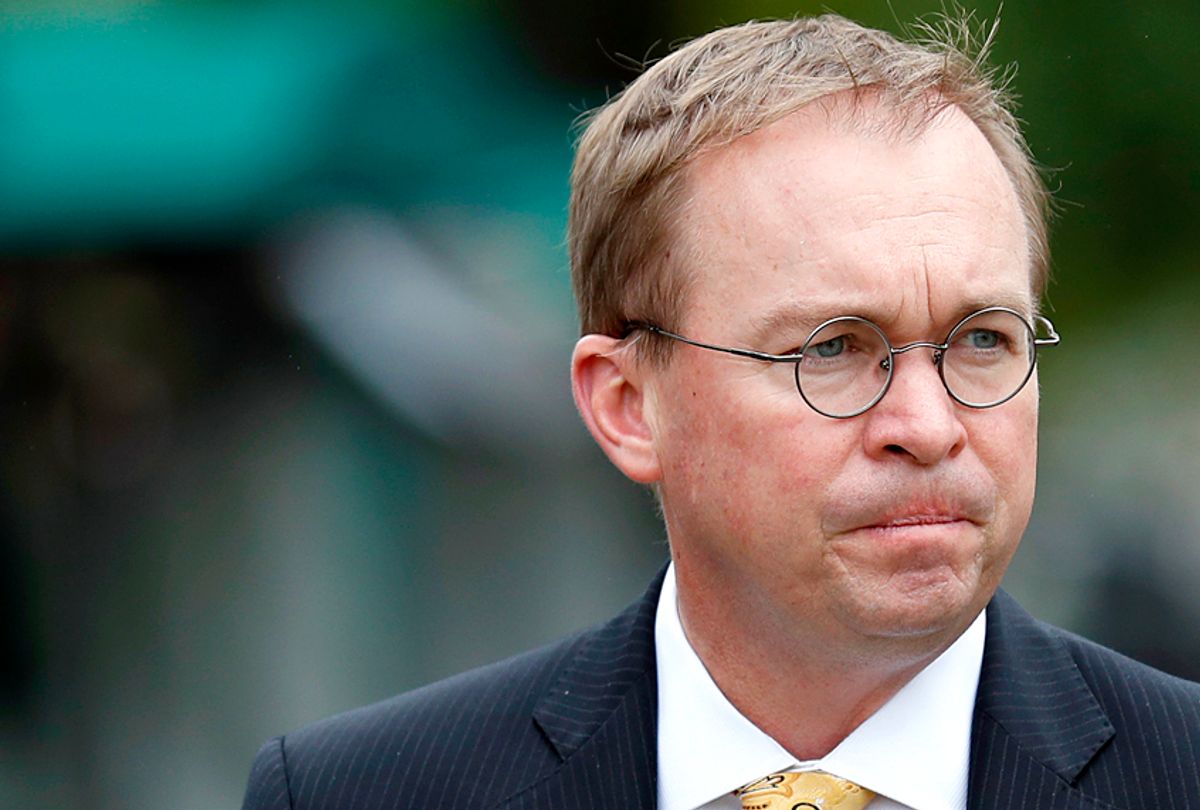When the Trump administration’s U.S. Office of Management and Budget (OMB) released its first semi-annual report on the status of federal regulations in July, it gave itself a big pat on the back for “amending and eliminating regulations that are ineffective, duplicative, and obsolete.” OMB Director Mick Mulvaney bragged about removing or withdrawing 860 regulations, most of which were in the process of being developed, and none of which, he assured, were important to the American public.
“I got news for you,” he said. “None of them are very sexy. None of them are very glamorous. None of them really rise to the level of getting national attention.”
Mulvaney did not describe what these not “very glamorous” rules would have done. That may be because the administration’s anti-regulatory fervor led it to kill rulemakings that, if completed, would have reduced workplace accidents, prevented fires and explosions, and protected the rights of same-gender couples.
For example, in 2008, a combustible dust fire explosion at the Imperial Sugar Company in Port Wentworth, Ga., killed 14 and injured 38 others. After a government investigation determined that the explosion was caused by “massive accumulations of combustible sugar dust,” the U.S. Occupational Safety and Health Administration (OSHA) moved to create a standard on combustible dust. The Trump administration ended that rulemaking.
In 2010, 29 miners died in an explosion in the Upper Big Branch coal mine in West Virginia. The CEO of the company was later sentenced to prison for his efforts to elude health and safety rules. The government performed a detailed investigation, pointed out multiple preventable hazards (including, again, combustible dust), and the U.S. Mine Safety and Health Administration began a rulemaking to address the hazards exposed by the explosion. The Trump administration abandoned it.
Since 2010, OSHA had been working on a commonsense rulemaking that would have required “employers to implement an Injury and Illness Prevention Program.” These programs require employers to identify hazards before workers get hurt. Workplaces that have adopted these programs have experienced “dramatic decreases in workplace injuries,” reduced turnover and saved money, while experiencing improved productivity, according to OSHA. The Trump administration ended the rulemaking.
In 2013, the landmark Supreme Court decision United States v. Windsor found the federal law banning gay marriage – known as the Defense of Marriage Act – to be unconstitutional. In response, Centers for Medicare & Medicaid Services began work on a rule that would ensure that same-gender spouses are afforded equal rights in facilities that participate in Medicare. The Trump administration ended the rulemaking.
Although the administration has clearly removed a number of critical important regulations for the health and safety of the American public, administration officials have not been entirely truthful in their reporting of overall withdrawals.
When it released its first Unified Agenda, the administration claimed it withdrew “469 actions proposed in the Fall 2016 Agenda.” But about 40 percent of the rules that the Trump team withdrew were not being actively worked on by the Obama administration and did not even appear in Obama’s Fall 2016 agenda.
In some cases, agencies appear to have temporarily withdrawn rulemakings just to pump up their numbers. The Department of the Interior (DOI) has all but acknowledged doing so. DOI reported withdrawing 114 rulemakings – twice as many as the next highest agency, Health and Human Services. Office of Management and Budget Director Mick Mulvaney heaped praise on Secretary of the Interior Ryan Zinke for his efforts.
But DOI’s first place finish comes with an asterisk. In 107 of the 114 rulemakings, DOI wrote that following an assessment, it may deem the rulemaking “appropriate for promulgation” (or similar words), indicating that the rule may returned to the Unified Agenda. This strategy is odd, amounting to a putting the cart before the horse in the regulatory review process. If it is still considering whether to issue the rules, DOI could have simply left these items on the Unified Agenda until it completed its evaluation.
The administration’s leaders have cheered their withdrawal efforts. That’s their prerogative.
But if combustible dust causes another factory to blow up, or if another coal mine explosion occurs, those cheers may come back to haunt them.



Shares